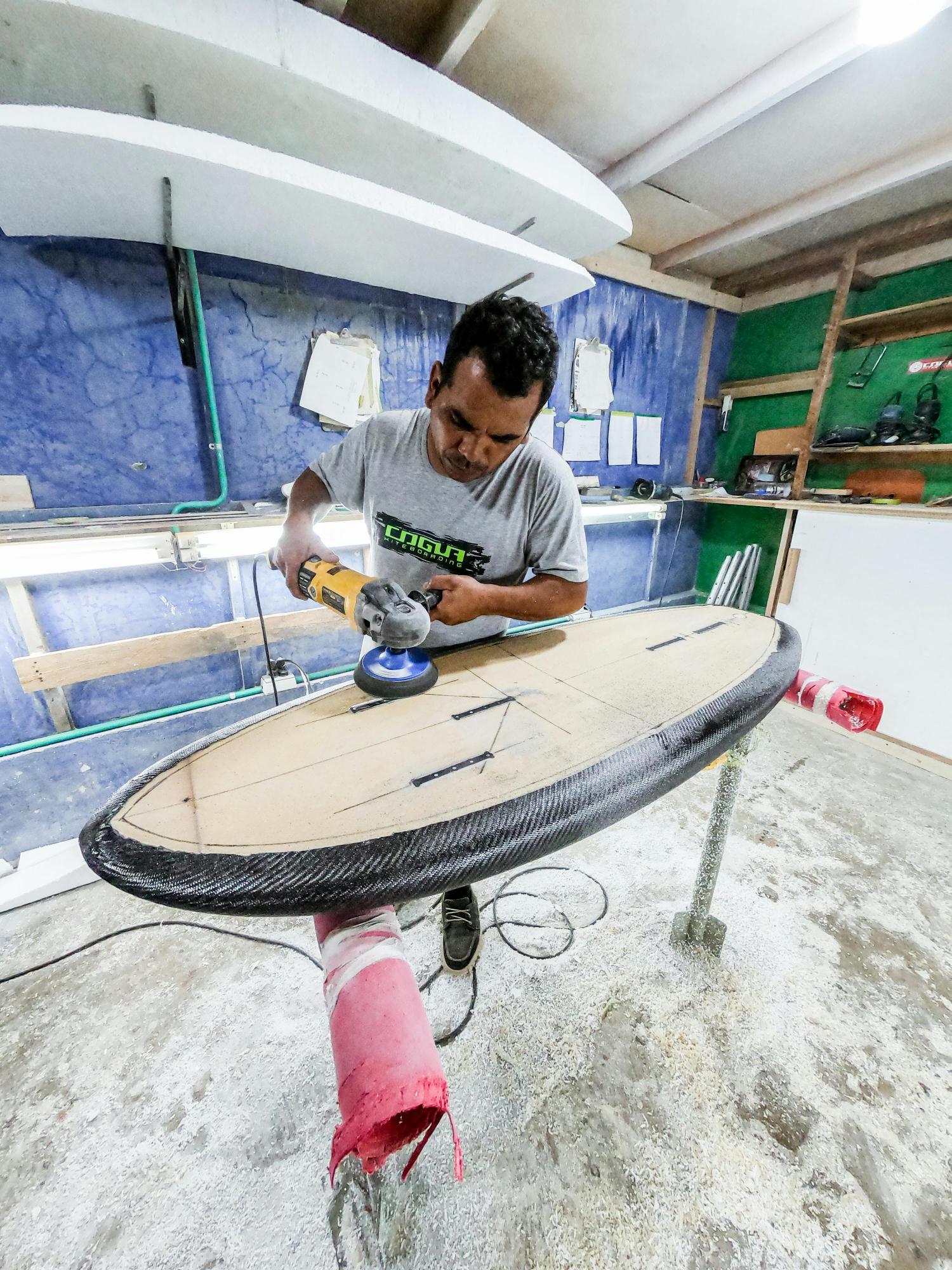Introduction
Surfing transcends mere sport—a communion with the ocean, a dance with the tides.
For those who ride the waves, safeguarding the seas often means embracing eco-conscious gear.
From wetsuits stitched from recycled rubber to surfboards shaped from cork, algae, or hemp, the shift toward sustainability is palpable.
Yet, what happens when your eco-board suffers a crack, ding, or delamination? The dream of green surfing suddenly feels fragile.
Repairing eco-friendly surfboards isn’t as simple as patching traditional polyurethane or epoxy boards.
The materials are distinct, the adhesives must be non-toxic, and the techniques demand finesse. Despite the surge in eco-board popularity, reliable repair guides are as rare as a flawless barrel.
This leaves surfers scrambling, often resorting to guesswork or discarding their boards entirely.
This guide plunges into DIY eco-board repairs, offering practical, earth-friendly solutions to keep your sustainable surfboard pristine.
Whether you’re tackling a minor scratch or a gaping crack, we’ll equip you with the know-how to honor both your board and the planet.
Why Eco-Board Repairs Are a Different Beast
Before diving into repairs, it’s crucial to grasp why eco-boards demand a unique approach.
Traditional surfboards rely on polyurethane foam and polyester resin—materials known for durability but notorious for their environmental toll.
Eco-boards, however, are crafted from innovative, planet-friendly alternatives:
- Cork: Featherlight, buoyant, and naturally water-repellent.
- Algae-based blanks: Renewable, often paired with bio-resins.
- Hemp fiber: Robust, flexible, and biodegradable.
- Paulownia wood: Lightweight yet sturdy, a favorite for hollow wooden boards.
While these materials are kinder to the Earth, they present their quirks. Cork can delaminate under excessive heat, algae-based blanks may soak moisture if improperly sealed, and hemp fibers can fray under stress.
Using conventional polyester resin or toxic solvents on these materials undermines their integrity and negates their eco-purpose.
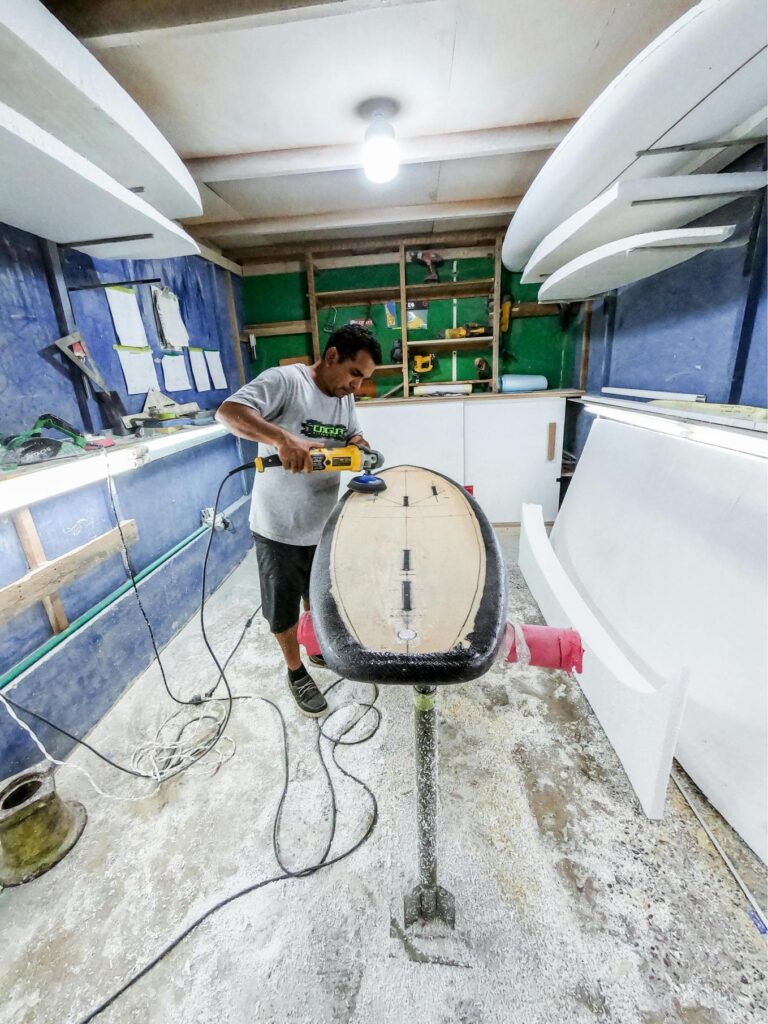
Essential Tools and Materials for Eco-Board Repairs
To mend your eco-board sustainably, you’ll need a toolkit that mirrors its green ethos. Here’s what to gather:
- Bio-Resins: Swap traditional epoxy for plant-based resins derived from soy or linseed oil. Brands like Entropy Resins offer non-toxic, low-VOC options.
- Natural Adhesives: Opt for beeswax–linseed oil blends or water-based glues for cork or wood repairs.
- Hemp or Flax Fiber Patches: These sustainable alternatives to fiberglass easily reinforce cracks and dings.
- Recycled Filler Material: Ditch traditional Q-Cell filler for crushed walnut shells or powdered cork.
- Non-Toxic Solvents: Clean repair areas with citrus-based solvents instead of harsh acetone.
- Sandpaper and Tools: Use fine-grit sandpaper (recycled, if possible) alongside a putty knife, clamps, and a heat gun for heat-activated adhesives.
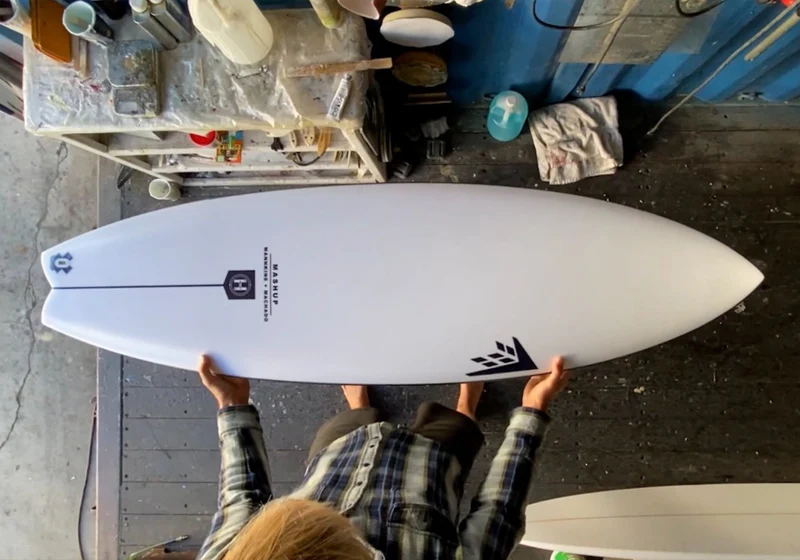
Step-by-Step Repair Techniques for Common Eco-Board Issues
1. Mending Cracks in Cork Decks
Cork’s natural grip and buoyancy make it a favorite for eco-board decks, but it’s prone to cracking under stress or extreme temperatures.
What You’ll Need:
- Heat-activated cork glue or beeswax-linseed oil adhesive.
- Fine-grit sandpaper.
- A heat gun or hairdryer.
- A putty knife.
Steps:
- Clean the Area: Wipe the crack with a damp cloth to remove debris. Let it dry thoroughly.
- Sand the Crack: Gently sand around the crack to create a smooth bonding surface.
- Apply Adhesive: Spread a thin layer of heat-activated glue or natural adhesive into the crack using a putty knife.
- Heat and Press: Use a heat gun to activate the adhesive, then press the cork firmly together. Clamp if needed and let it cure for 24 hours.
- Sand Again: Once cured, lightly sand the area to blend seamlessly with the surrounding cork.
2. Repairing Delamination in Algae-Based Blanks
Algae-based blanks are eco-chic but can delaminate when exposed to moisture or improper storage.
What You’ll Need:
- Bio-resin (e.g., Entropy Resins).
- Hemp or flax fiber patches.
- A brush or roller for resin application.
- Clamps or weights.
Steps:
- Assess the Damage: Identify the delaminated section and gently lift the layers to remove trapped moisture or debris.
- Prepare the Surface: Lightly sand the area to roughen it for better adhesion.
- Apply Bio-Resin: Mix the bio-resin per instructions and apply a thin layer to the blank and delaminated sections.
- Reinforce with Patches: Place a hemp or flax fiber patch over the delaminated area, then add another layer of bio-resin.
- Clamp and Cure: Use clamps or weights to press the layers together. Let it cure for 24-48 hours.
- Finish: Sand the repaired area smoothly and apply a final bio-resin coat for protection.
3. Patching Dings in Hemp Fiber Boards
Hemp fiber boards are resilient but not immune to dings from rocks or collisions.
What You’ll Need:
- Bio-resin or natural adhesive.
- Recycled filler material (e.g., crushed walnut shells).
- A putty knife.
- Fine-grit sandpaper.
Steps:
- Clean the Ding: Remove loose fibers or debris from the damaged area.
- Fill the Ding: Mix bio-resin with recycled filler to create a paste. Press it into the ding using a putty knife, ensuring it’s level with the board’s surface.
- Let It Cure: Allow the filler to cure fully, following the resin manufacturer’s guidelines.
- Sand Smooth: Once cured, sand the area gently to blend it with the board.
- Seal the Repair: Apply a thin layer of bio-resin over the repaired area to seal and protect it.
4. Replacing Fin Boxes in Wooden Boards
Wooden boards, especially those made from paulownia, are stunning but can suffer fin box damage from heavy use.
What You’ll Need:
- A replacement fin box (preferably recycled).
- Bio-resin or natural adhesive.
- A router or Dremel tool.
- Clamps.
Steps:
- Remove the Damaged Fin Box: Carefully cut away the damaged fin box using a router or Dremel tool.
- Prepare the Slot: Clean and sand the slot to ensure a smooth surface for the new fin box.
- Install the New Fin Box: Apply bio-resin to the slot and press the new fin box into place. Secure it with clamps while it cures.
- Finish: Once cured, sand any rough edges and apply a final bio-resin coat for a polished look.
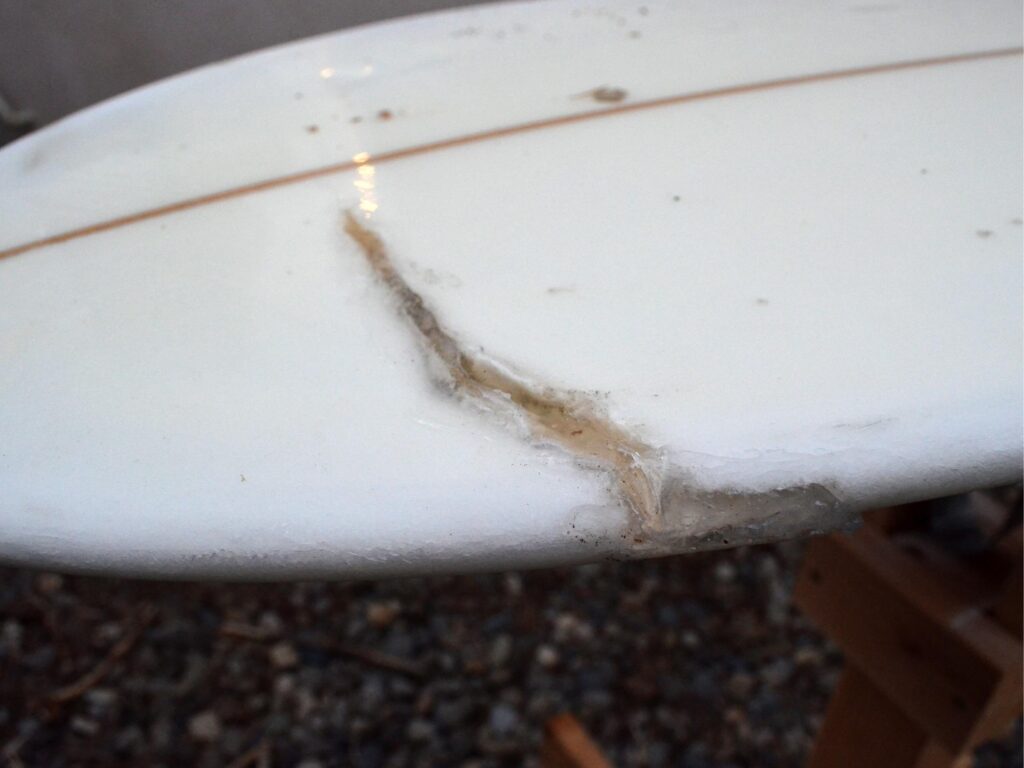
Preventative Maintenance Tips for Eco-Boards
Eco-boards are an investment in both your surfing and the planet. Here’s how to keep them in peak condition:
- Rinse After Every Use: Saltwater and sand are harsh on eco-materials. Rinse your board thoroughly after each session.
- Store Properly: Avoid prolonged exposure to sunlight or extreme temperatures—store in a cool, shaded area, preferably in a board bag.
- Inspect Regularly: Check for delamination, cracks, or dings before and after surfing. Address issues promptly.
- Use a Protective Coating: Apply eco-friendly wax or a UV-protective coating to shield your board from the elements.
- Avoid Heavy Impacts: Steer clear of shallow or rocky areas to minimize damage.
- Rotate Your Quiver: If you own multiple boards, rotate them to reduce wear on any single board.
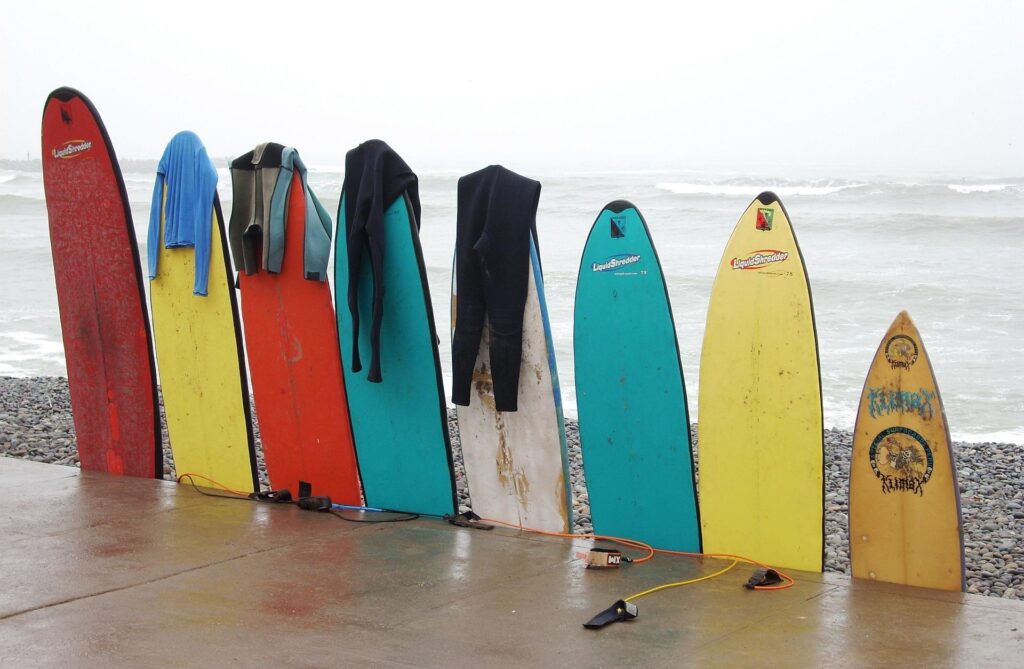
Conclusion: Riding Green, Repairing Smarter
Surfing isn’t just about chasing waves—it’s about honoring the ocean that gifts them to us.
Eco-friendly surfboards are a testament to this respect, but they come with their own set of challenges.
By mastering the art of sustainable repairs, you’re not just fixing a board; you’re contributing to a greener surfing future.
Whenever you choose a non-toxic adhesive, a recycled filler, or a natural patch, you make a small yet profound impact.
So, the next time your eco-board takes a hit, don’t despair. Embrace the challenge, innovate, and take pride in being part of a community that rides green and repairs smarter.
The waves are calling, and your eco-board is ready. Let’s keep it that way.

